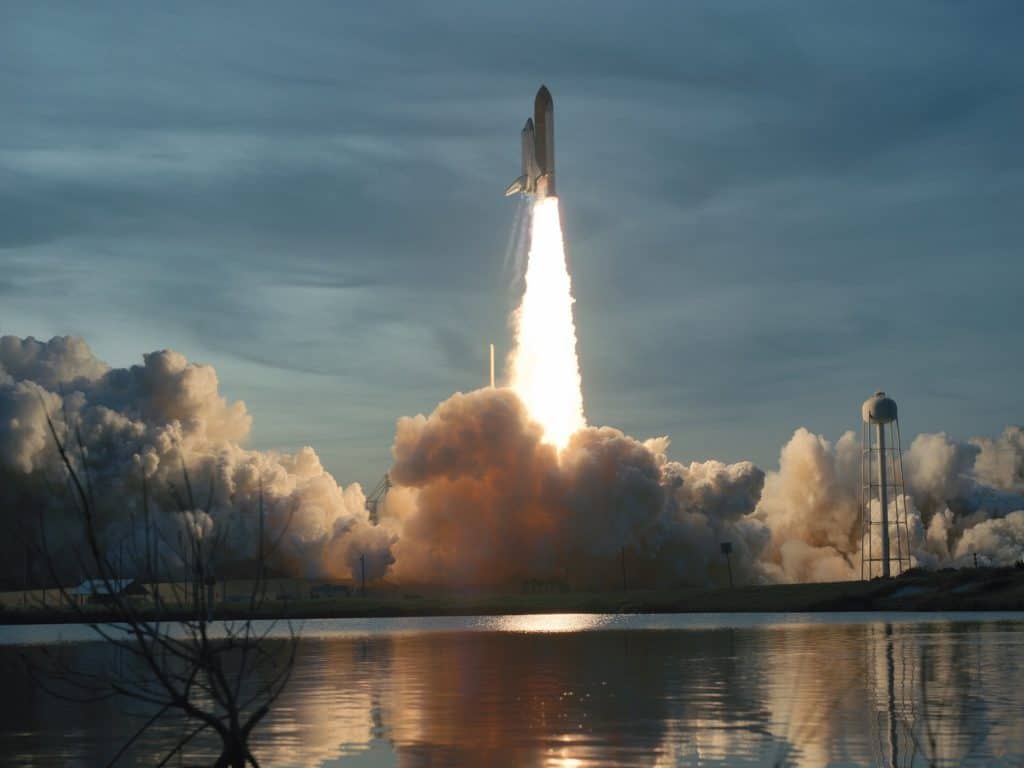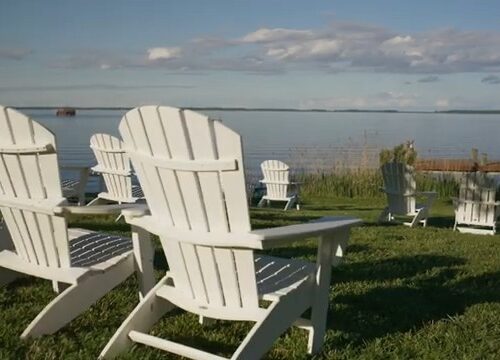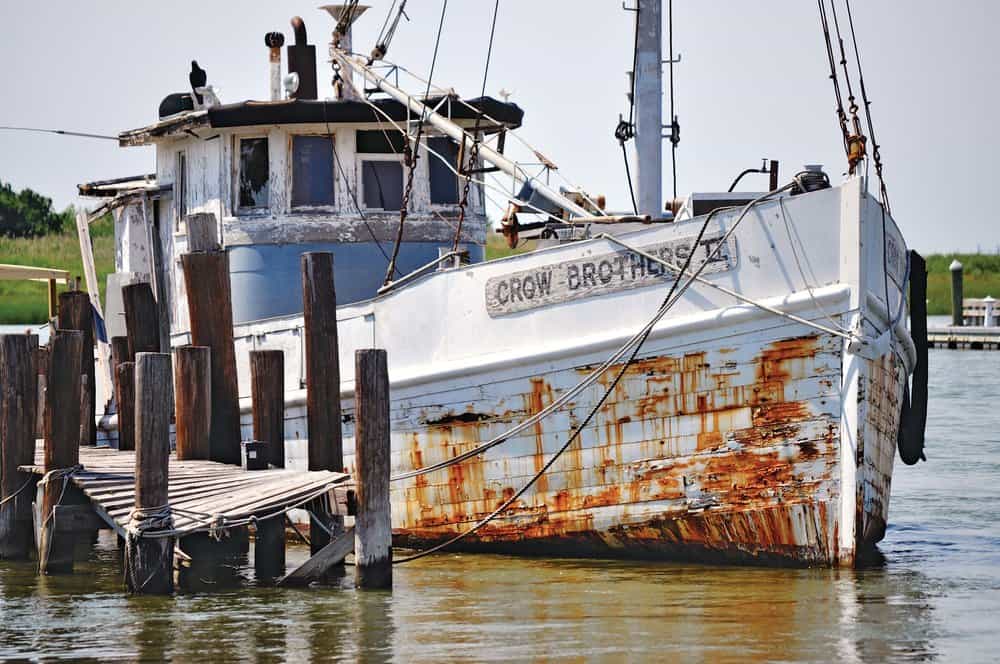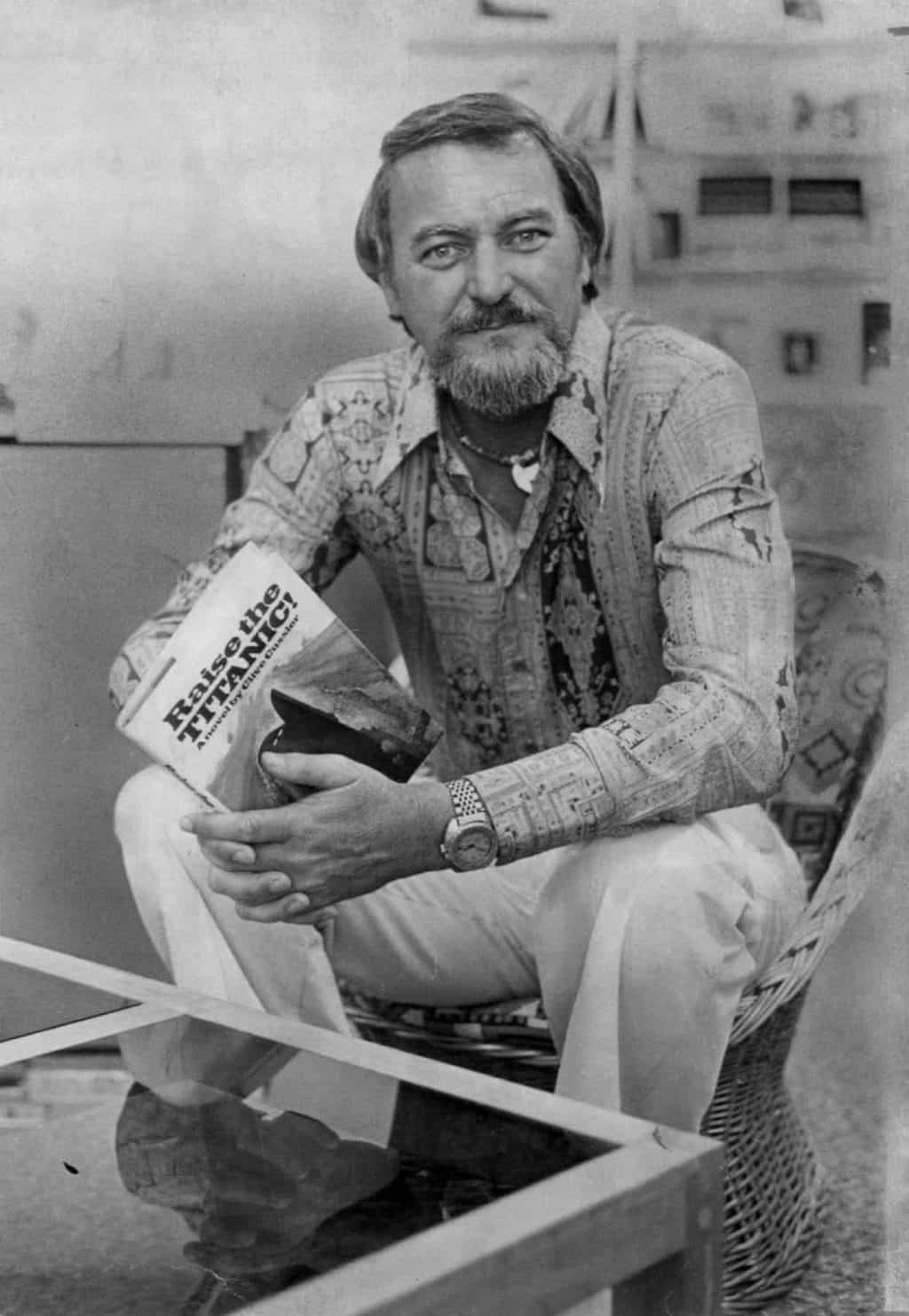Chesapeake astronaut Ken Reightler carried a piece of Bay history around the earth 84 times over a six day jaunt.
By Rafael Alvarez
One of the few human beings to see the sun set 16 times in a single day, Ken Reightler was born upon the waters of Maryland on March 24, 1951.
It was the last year of the Truman administration, and Reightler’s father was a Navy aviation mechanic at Patuxent Naval Air Station. The elder Reightler and his wife, the former Evelyn Lowery of Tilghman, were living in a Quonset hut on Solomons Island. To get to the Navy clinic at Patuxent—for a toothache, the flu, or to give birth to your first child—one boarded an armed rescue craft called a “crash boat.”
“Mom went into labor and they got on a boat,” said Reightler, now 68 and living in Annapolis. “They began making their way, and halfway over, [one of the engines] caught fire.”
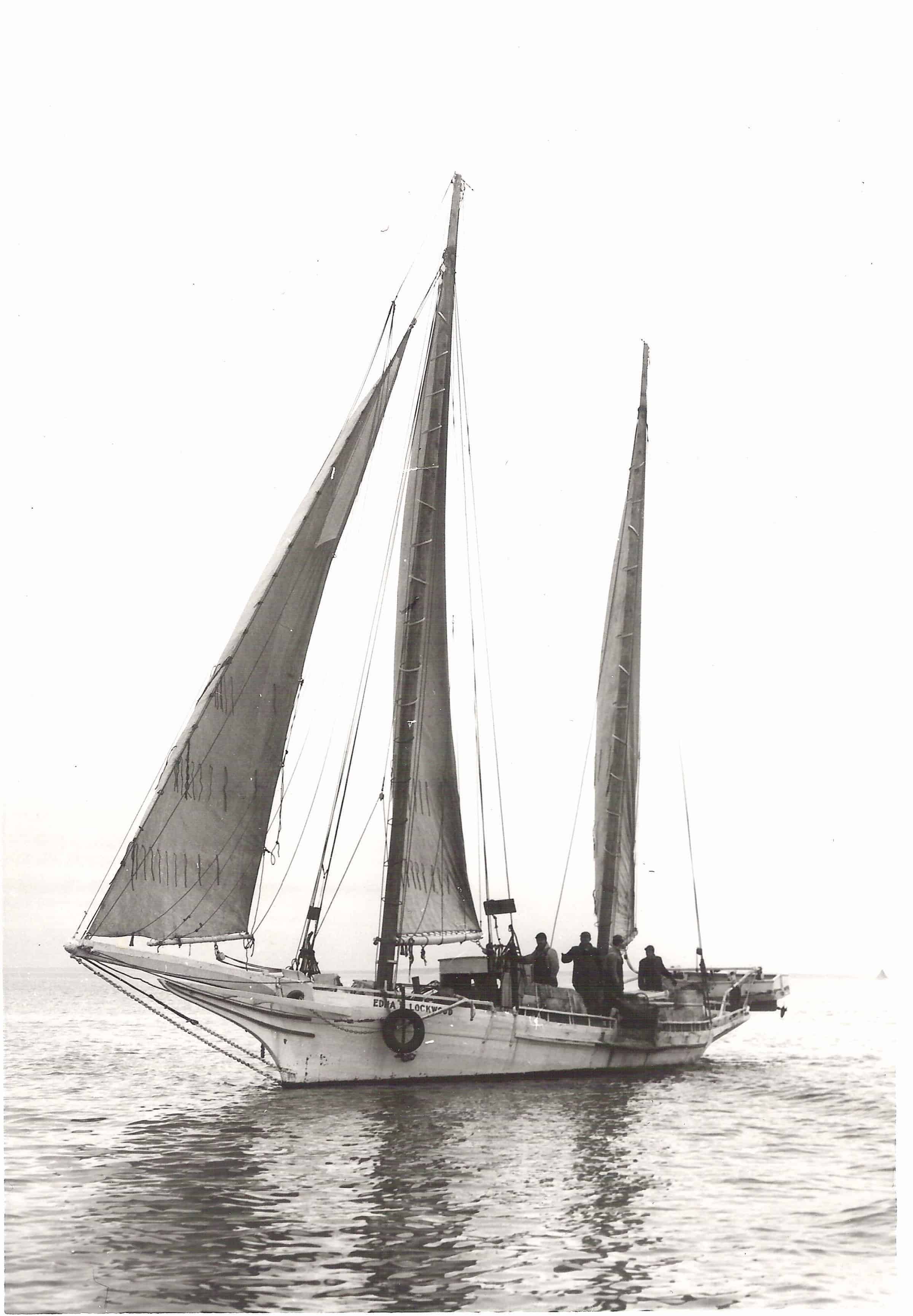
The Edna E. Lockwood
The Chesapeake Bay bugeye Edna E. Lockwood, built by Ken Reightler’s great-grandfather, John B. Harrison, recently underwent a two-year restoration at the Chesapeake Bay Maritime Museum, home to the boat since 1973.
Beginning in the early 1880s, Maryland boatbuilders built two-masted bugeyes to haul iron dredges across oyster beds under sail in order to comply with Maryland’s sail-only oyster dredging regulations. At the turn of the 20th century, bugeyes were replaced by less expensive skipjacks, though their use continued to mid-century.
Built in 1889, the Lockwood was the seventh of the 18 bugeyes built by Harrison, and the last to harvest oysters on the Bay. In off seasons, the boat was used to run lumber, produce and other cargo. In 1994, the Lockwood was named a National Historic Landmark as the last bugeye under sail. She was relaunched in October 2018, after receiving a new nine-log hull, some replacement deck planking, rebuilt cabins and other deck structures, and a new rig, as well as new sails made by Traditional Rigging in Appleton, Maine. The restoration work was done by museum shipwrights and apprentices, and the boat returns to the Bay as a floating classroom. The museum is planning a Bay-wide tour to show off the restoration in summer of 2019.
The fire burned through the rudder cable and the boat began going in circles as Evelyn’s contractions came more quickly. A shorted wire had caused the fire. The crew, with the help of the expectant father, extinguished the flames, jury-rigged the steering and made the four-minute trip in less than half-an-hour.
According to the base newspaper, The Tester, “Baby Reightler was born 20 minutes later.” The headline read: CRASH BOAT RACES STORK FROM SOLOMONS TO PATUXENT FAMILY CLINIC—VICTORIOUSLY.
It’s a dramatic creation story—the beginning of a narrative straddling air and sea and one that Ken Reightler heard often growing up. Sometimes the story had Kenneth Stanley Reighter, Jr. born aboard the distressed vessel. In other tellings, Evelyn made it to the clinic just in time.
So, what type of entry did the child have?
Crash boat or delivery room?
“All I know is that as the boat approaches the dock, I’m about to be born,” said Reighter.
This much is true: Ken Reightler, who in 1991 and 1994 piloted the NASA space shuttle Discovery fired by 3.7 million pounds of fuel, was born amidst speed and combustion and made them his career. From that first turbulent ride across the channel where the Patuxent River meets the Chesapeake Bay, his life has been defined by boats on the waters of the Bay and aircraft high above them.
“I grew up around a Naval Air Station where they tested airplanes, with a lot of naval aviation stories in my head,” said Reightler. “But when my Dad would deploy, my mother would take us to live on Tilghman Island. We spent summers there, sometimes with my parents and sometimes just me with my grandparents and cousins.”
Reightler’s two great passions—sailing and flying—are embodied in a three-inch, 130-year-old wooden disc, which he took with him into space on his first Discovery mission in mid-September of 1991, orbiting the Earth 81 times.
When you are going ‘round and ‘round like that at 17,500 miles an hour, you see the Earth’s sun setting multiple times each day—from New York to New Delhi and back. The blue planet below, said Reightler, appears “fragile—when you see how thin the atmosphere, how vulnerable the Earth is, it’s very eye opening.”
The wooden disc, which he donated to the Chesapeake Bay Maritime Museum in St. Michaels after its journey of nearly 2.2 million miles, was cut from the bowsprit of the Edna E. Lockwood, the last working Tilghman Island bugeye. The boat was built in 1889 by John B. Harrison, Reightler’s fabled great-grandfather on his mother’s side, born at the close of the Civil War and living all of his 80 years on Tilghman until his death at home on Gibsontown Road in 1945.
“I wanted to honor my Eastern Shore heritage,” said Reighter, who in retirement has kept that legacy
alive by racing log canoes with John C. North II, an 88-year-old retired Circuit Court judge who, as a boy, visited John B. Harrison at the boatwright’s Tilghman Island yard, an offshore mound of hundreds of thousands of oyster shells called “Devil Island.”
“My great-grandfather (William Sydney Covington, 1850-to-1924) was Ken’s great-great-grandfather,” said North, who traveled to the Kennedy Space Center in Florida in 1991 to watch his young relative blast off.
It wasn’t until later, however, that North—who steers the log canoe Island Bird during June-to-September races while Reightler serves as tactician—found out that his distant cousin had taken a hallowed bit of Tilghman to the heavens.
Judge North recently published a definitive history of log canoes (Tradition, Speed & Grace: Chesapeake Bay Sailing Log Canoes) and makes the argument that they are the oldest class of racing sailboats in the world. The canoes are similar to the Lockwood in that both have hulls made of shaped and pinned logs, a bit of engineering early English settlers learned from Native Americans.
The Lockwood returned to Bay waters this past October, 130-years to the month of her maiden launch, after an extensive restoration by the Chesapeake Bay Maritime Museum shipwright staff in St. Michaels. She’s part of the museum’s 14-boat, floating fleet.
And then there were the pennies, three of them taped to Reightler’s dog tags. Their presence on the Discovery’s primary mission to deploy an Upper Atmosphere Research satellite were in violation of NASA regulations. But the Lincoln coppers were important enough to Reightler (and an undetected infraction of no consequence) to take along with his colleagues—Commander John O. Creighton and mission specialists Charles D. Gemar, James F. Buchli, and Mark N. Brown.
Reightler told me the pennies story after finding one on the ground at Naval Bagels, a coffee shop near the Naval Academy where I met him last year on 9/11. It was about a week after U.S. Senator and 1958 academy-grad John McCain had been laid to rest, and we stopped by the fresh grave of the Navy pilot/war hero before touring the academy grounds.
“My wife and I have always collected [found] pennies,” said Reightler. “We make a wish and throw them in a fountain.”
Reightler’s wife is his high school sweetheart and most trusted counsel, the former Maureen McHenry, daughter of a Navy commander and a descendent of James McHenry, for whom Baltimore’s celebrated fort of star-spangled fame is named.
She requested—for luck and a safe return—that Reightler take three pennies into space, each minted in a year of a family member’s birth: 1951 for she and Ken; 1978 for daughter Kate and 1984 for daughter Emily.
There were “official restrictions,” Reightler said, against taking collectibles such as coins or stamps into space lest they be commercialized, “but since they were requested by Maureen,” the otherwise st raight-arrow Eagle Scout circumvented the rules by taping the pennies to his dog tags.
Anything for Maureen, an accomplished linguist and psychotherapist with a specialty in disaster trauma; the true believer in Ken Reightler who, as a young bride, set aside a promising career in medicine and the foreign service to support her husband’s ambitions.
She is likely the person most responsible for the realization of Reightler’s dream of going into space. As far back as their high school years in the Navy town of Virginia Beach, Maureen was meeting Ken’s lofty ambitions head-on: “What’s the plan?”
Though Reightler claims he was ill-prepared for the academic rigors of the Academy and had to work harder than the next guy (a centuries old Annapolis refrain), Maureen’s query may have been the hardest he had to answer.
“What’s the plan?”
He didn’t have one, just a far-fetched idea of visiting bella luna a quarter-of-a-million miles away.
It began with science fiction as with so many grade-school ambitions of American kids in the 1950s. Reightler borrowed fantastic stories from the library that he never imagined could come true. About the same time, he began following the real-life adventures of Alan Shepard and the Mercury astronauts.
By 1961, now a 10-year-old living on a Naval Air Facility in El Centro, California, where spacecraft parachutes were being developed, Reightler’s greatest wish was to go to the moon. This abiding fancy intensified during Reightler’s plebe summer at the Naval Academy when, on July 20, 1969, he and his fellow midshipmen watched the Apollo 11 moon landing on a 13-inch black-and-white in Bancroft Hall (the world’s largest dormitory). It was the only time in seven weeks of training they were permitted to watch TV or listen to a radio.
“I was only three weeks into plebe summer and you don’t even know if you’re going to survive,” he said. “But I want to be part of what I’m seeing, thinking. ‘Wow, this is real! We can do anything!’ And I want to be part of it. I want to go to the moon.”
By then, Maureen didn’t have to ask the question. It was deeply embedded in Reightler’s psyche.
“What’s the plan?”
The answer was a twist on the old vaudeville saw: “How do you get to Carnegie Hall?” But instead of “practice, practice, practice,” the answer was “study, study, study.”
Although advanced education or the pursuit of military rank wasn’t given high priority in Reightler’s family, it was of great importance in Maureen’s home, and Reightler hit the books with the kind of diligence John B. Harrison put into building boats. While catching up for what he’d missed in high school math, Reightler majored in aerospace engineering and, after getting pushed around the football field for being “undersized and too slow”, he joined the sailing team.
After graduating in 1973, Reightler went to flight school at Pensacola, and got his “wings of gold”, just like Naval aviator Neil Armstrong of “one small step” fame, at the
Naval Air Training Command in Corpus Christi. There was more training at his birthplace, the Patuxent Naval Air Station and then onto Jacksonville to join his first fleet squadron. In 1984, after flying dozens of different prototype aircraft, Reightler earned a master’s degree in Aeronautical Engineering from the Navy’s postgraduate school
in Monterey.
In 1991, along with a piece of the Edna Lockwood and his lucky pennies, Reightler went into space for the first time. His second and final voyage took place in February
of 1994 when he piloted Discovery for the first joint U.S./Russian space shuttle mission. Known as STS-60, the crew included cosmonaut Sergei Krikalyov for a range of biological, materials science, earth observation, and life science experiments.
Today, Ken Reightler is a Distinguished Professor of Aerospace Engineering at the Naval Academy and volunteers as a coach for the Academy’s Varsity Offshore Sailing Team as well as leading midshipmen on sailing expeditions up and down the East Coast.
And while Reightler didn’t make it all the way to the moon, his accomplishments—some 5,000 hours of flight in 60 types of aircraft; one of about 500 people to travel to space—did land him a guest spot on a Barney & Friends children’s video—“Barney in Outer Space.” (Reightler said the purple dinosaur “asks very good questions.”)
Quite the honor, particularly because space travel and dinosaurs are two of the most enduring interests of young children. But what happened to “the plan”—a wide-eyed and imaginative boy’s dream to reach the moon?
“My interest in space travel was exploration,” said Reightler, looking back 60 years to the boy he once was.
“As a young midshipman, that meant flying to the moon, landing, walking around and discovering new things and places.
“But I came to understand that for humanity to have the ability to safely and successfully explore space, it will take hundreds of small steps. Collectively, they will provide the knowledge and capacity to accomplish those voyages of discovery.”
And yet, he says, “I would still like to take a hike on the moon.”

